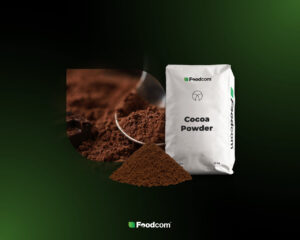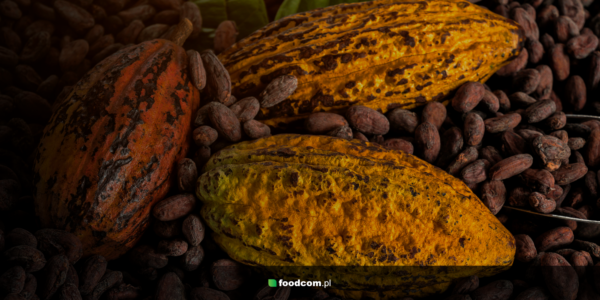- Cocoa is a valuable commodity with a rich history, used as food and currency by ancient Central American civilisations.
- In 2024, cocoa prices reached record levels due to concerns about next year’s harvest and lack of liquidity in the market.
- Cocoa prices are affected by reduced production, high global demand, climate change and rising production costs.
- High cocoa prices have a direct impact on the chocolate, cosmetics and pharmaceutical industries, which is ultimately felt by end consumers.
Cocoa is one of the world’s most valuable raw materials and its history dates back to the ancient civilisations of Central America, where it was used as food and currency. Today, it continues to play a key role in the global economy and is an essential ingredient in many products, particularly chocolate. Cocoa prices are shaped by a variety of factors, including climatic conditions and changes in global trade policies.
Changing prices affect a wide range of actors – from farmers to processors and consumers. For producers, it means changes in income and is often a source of economic uncertainty. For processing companies, it can affect production costs and pricing strategies.
Current situation on the cocoa market
2024 was an extremely eventful year for the cocoa market. In April, prices reached record levels. May contracts reached as high as USD 12 567 per tonne in London and USD 11 878 per tonne in New York. This was due to concerns about next year’s harvest and a lack of liquidity in the market. However, by the end of the month, prices had fallen by 15 per cent and stabilised at USD 10 662 in London and USD 10 050 in New York.
The average price for June 2024 was USD 8 271 per tonne. This indicates an increase of 9.72% compared to the previous month and an increase of 160.7% compared to June 2023. It is the result not only of short-term disruptions, but also of long-term trends that shape the market.
Price trends in recent years
Cocoa prices have increased significantly in recent years. In 2023, they averaged around USD 3 173 per tonne, already a big jump compared to previous years. The reasons for this trend are both structural and sudden events that have made cocoa production more unpredictable.
Future prospects
Cocoa prices are set to remain high for the next few months as a result of a complex combination of factors. High demand for chocolate, especially for premium products, combined with supply problems, is contributing to further price increases. Climate change is affecting crop yields, leading to cocoa shortages. In addition, rising production costs, such as fertiliser prices and workers’ wages, are also pushing up prices.
Extreme weather events, plant diseases and the previously mentioned rising production costs make the future of the cocoa market uncertain. Nevertheless, the high demand for chocolate, especially in developing countries, and the growing popularity of premium products, ensure that cocoa will remain a valuable commodity in the global market.
Factors contributing to current high cocoa prices
Reduced production
Major cocoa-producing countries such as Côte d’Ivoire and Ghana are experiencing significant declines in production. Plant diseases, such as stem swelling virus, and variable climatic conditions, such as drought and erratic rainfall, are negatively affecting yields. In 2024, global cocoa production is down by around 11% compared to the previous year, significantly affecting the availability of raw material. These problems are exacerbated by ageing plantations and a lack of modern cultivation techniques.
High demand
Global demand for chocolate is growing, especially in developing countries. Chinese and Indian consumers are increasingly turning to chocolate, resulting in a growing demand for the raw material. In addition, the growing popularity of premium chocolate and speciality chocolate products is driving demand for high-quality products. Furthermore, cocoa is not only used in food, but also in cosmetics and dietary supplements, so demand is growing worldwide. Cocoa’s high nutritional value, including its antioxidant and mineral content, contributes to its growing popularity.
Climate change
Cocoa is grown in the tropics, which is very sensitive to climate change. Stable temperatures, humidity and regular rainfall are crucial for the healthy growth of cocoa trees. Climate change can disrupt these conditions and cause production problems.
Extreme weather events, such as El Niño, can cause droughts and other weather anomalies that affect crops, as has been the case this year. Excessive rainfall, on the other hand, can cause flooding and an increased risk of fungal diseases such as witch hazel and black pod rot, which can destroy entire plantations.
Production costs
Cocoa prices are affected by rising production, fertiliser and labour costs. In Ghana, an increase in the minimum wage is affecting production costs, resulting in higher final prices. Additionally, the conflict in Ukraine has disrupted global fertiliser supply chains, which has contributed to rising costs.
Supply shortages
Demand for premium chocolate and other cocoa-containing products is high and supply is low, so there are shortages and higher prices. Expectations of further supply shortages are driving chocolate makers to buy in stock, adding further pressure on prices.
The impact of cocoa prices on the global market
Chocolate industry
High prices have a direct impact on the chocolate industry, which is the largest consumer of this raw material. Rising cocoa production costs translate into higher chocolate production costs. Chocolate companies such as Nestlé, Mars, and Hershey have to raise the prices of their products to compensate for higher raw material costs. In 2024, many of these companies have announced price increases for their products.
However, it is not only chocolate prices that are under threat. High cocoa prices may force companies to look for alternative sources of the raw material or innovative solutions. Manufacturers are working together to develop cocoa substitutes that can be used in the production of chocolate and other products.
Impact on other sectors
The impact of high prices is not limited to the chocolate industry. Cocoa is used in cosmetics, beverages, pharmaceuticals and as an ingredient in many food products. An increase in the price of the raw material will affect all these industries and producers will have to raise prices or look for alternatives.
Cosmetics with cocoa butter, a prized ingredient for its moisturising properties, will be more expensive. The pharmaceutical industry, which uses cocoa extracts in many dietary supplements, will also see a price increase.
Final consumer
The end consumer is ultimately the one who is affected by price increases. Higher prices for chocolate and other products containing cocoa will lead to reduced consumption. Consumers will seek cheaper alternatives or cut back on luxury products such as premium chocolate.
In developed countries, where chocolate is widely consumed, higher prices will change consumer behaviour. In developing countries, where chocolate consumption is growing, price increases will break this trend and limit the availability of chocolate products to a wider population.
2024 was a record year for cocoa prices and the market was in trouble. April and May contract prices were over US$12,000 per tonne and June prices were more than 160% higher than the year before. The price increase was due to a number of factors – climate change, crop disease, rising production costs and demand for premium chocolate.
These factors have affected the supply and availability of cocoa and caused market disruption. In the coming months, the cocoa market will need to innovate, adopt sustainable farming practices and adapt to changing conditions. However, despite the challenges, cocoa is a commodity of great economic and social importance.









